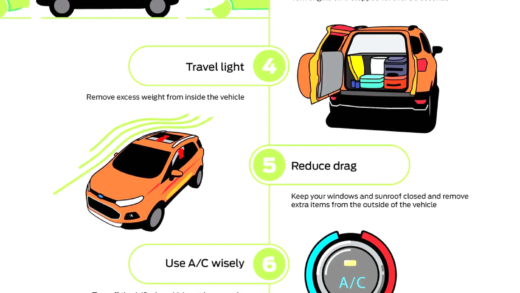Thundersnow is a rare winter phenomenon combining snowfall with thunder and lightning. This article explains the unique conditions necessary for thundersnow, its rarity, and its environmental effects. It also compares thundersnow with traditional thunderstorms, emphasizing differences in precipitation types and temperature conditions.
What is Thundersnow?
Thundersnow is a rare meteorological phenomenon where snowfall is accompanied by thunder and lightning. This unusual weather event combines elements of both snow and thunderstorms, creating a unique and often dramatic winter storm. Unlike typical snowstorms, which can be peaceful and quiet, thundersnow brings a startling mix of heavy snow and booming thunder, making it an exciting spectacle for those who experience it.
During thundersnow, the snow can fall heavily, leading to rapid accumulation, while the thunder and lightning add a layer of intensity and surprise. The sound of thunder amidst falling snow can be both eerie and fascinating, capturing the attention of onlookers. This phenomenon is particularly noted for its beauty and the contrast it presents: soft white snowflakes falling against the backdrop of dark storm clouds.
How Does Thundersnow Occur?
Thundersnow occurs when specific atmospheric conditions align to create both snow and thunderstorm activity simultaneously. Typically, this requires a strong upward motion of warm, moist air that rises into a colder atmosphere, resulting in the formation of snowflakes. As these snowflakes grow and fall, they can carry electrical charges, leading to the development of lightning.
The process starts with a wave cyclone, which generates the necessary lift. As air ascends, it cools and moisture condenses, forming clouds and precipitation. If the temperature is low enough, this precipitation falls as snow. The key factor is that the upward motion must be strong enough to create the electrical activity typically associated with thunderstorms. This upward motion can be likened to a roller coaster, where the rapid ascent leads to exhilarating drops – in this case, snow and thunder.
Conditions Necessary for Thundersnow
For thundersnow to occur, several specific weather conditions must be met:
- Cold Air: A cold atmosphere is essential for snow formation.
- Moisture: High humidity levels provide the necessary moisture for precipitation.
- Upward Motion: Strong upward air currents are critical to trigger thunderstorm activity.
- Instability: The atmosphere must be unstable enough to allow for the development of thunderstorms.
These conditions rarely align perfectly, which is why thundersnow events are infrequent. When they do occur, they can lead to significant snowfall rates and dramatic weather changes.
Why is Thundersnow So Rare?
Thundersnow is considered rare due to the unique combination of atmospheric conditions required for its formation. While snowstorms are common in many regions, the occurrence of thundersnow demands an unusual set of circumstances:
- Specific Temperature: The temperature needs to be cold enough for snow but not too cold to prevent moisture from rising.
- Moisture Availability: There must be sufficient moisture in the air, which is often limited during winter months.
- Strong Updrafts: Not all winter storms have the necessary updrafts that can create lightning.
Because of these factors, thundersnow events are few and far between, making them a fascinating occurrence for meteorologists and weather enthusiasts alike.
Understanding Wave Cyclones
Wave cyclones are significant players in weather patterns, especially when it comes to thundersnow. These systems are large-scale areas of low pressure that form along the boundaries of different air masses. Essentially, a wave cyclone acts like a conveyor belt, transporting warm, moist air upward while cold air sinks. This interaction can lead to the development of precipitation, including snow and, under the right conditions, thundersnow.
Wave cyclones typically develop in mid-latitude regions, where they can tap into the contrasts between warm and cold air. As the warm air rises and cools, moisture condenses, forming clouds and precipitation. The dynamic nature of wave cyclones is crucial for creating the instability needed for thunderstorms, which can result in the rare phenomenon of thundersnow.
Upward Motion and Thundersnow
Upward motion is vital for the formation of thundersnow. This phenomenon occurs when warm, moist air rises rapidly into the colder upper atmosphere. When this upward motion is strong enough, it can lead to significant precipitation and the electrical activity that produces thunder and lightning. Think of it as a vigorous lift-off where warm air shoots up like a rocket, creating conditions ripe for thundersnow.
The intensity of this upward motion is often linked to the strength of the wave cyclone. As the cyclone moves, it generates powerful updrafts that can cause snowflakes to grow large and heavy. When these snowflakes fall, they can carry electric charges, resulting in the unexpected thunder and lightning associated with thundersnow. Thus, the connection between upward motion and thundersnow is both direct and crucial.
Precipitation Types Associated with Thundersnow
Thundersnow is not just about snow; it can also involve various types of precipitation. The primary form is, of course, snow, which can fall heavily during thundersnow events. However, other precipitation types may also be present, such as sleet or freezing rain, depending on the temperature layers in the atmosphere.
- Snow: The dominant form of precipitation during thundersnow, characterized by large, fluffy flakes.
- Sleet: Small ice pellets that can occur when raindrops freeze before hitting the ground.
- Freezing Rain: Rain that falls as liquid but freezes upon contact with cold surfaces, creating icy conditions.
Understanding these types of precipitation is essential, as they can significantly impact travel and safety during winter storms.
Lightning During Thundersnow
Can thundersnow cause lightning? Absolutely! One of the most fascinating aspects of thundersnow is the possibility of lightning occurring amidst the snowfall. This lightning is a direct result of the same electrical processes that lead to thunderstorm activity. As snowflakes collide and move through the turbulent air, they can generate static electricity, leading to lightning strikes.
While lightning is less common during thundersnow than in traditional thunderstorms, it can still occur. The presence of lightning adds an unexpected twist to the snowy landscape, creating a unique spectacle for those lucky enough to witness it. This phenomenon not only captivates observers but also raises questions about the complexities of winter weather.
Environmental Effects of Thundersnow
Thundersnow significantly impacts the environment, and understanding these effects is crucial. The primary consequence of thundersnow is its ability to produce heavy snowfall that can lead to:
- Snow Accumulation: Rapid snow accumulation can cause hazardous conditions on roads, affecting transportation.
- Soil Moisture: The moisture from melting snow contributes to groundwater recharge, benefiting agriculture.
- Wildlife Disruption: Sudden weather changes can disrupt animal behaviors, affecting their feeding and breeding patterns.
Additionally, thundersnow can lead to unique atmospheric phenomena, such as the formation of ice and sleet, which may impact local ecosystems. The electrical activity associated with thundersnow can also affect air quality, as lightning can produce nitrogen oxides that contribute to ozone formation. Understanding these environmental effects is essential for preparing for and mitigating the impacts of thundersnow.
Thundersnow Compared to Thunderstorms
Thundersnow differs from traditional thunderstorms in several key aspects. While both phenomena involve thunder and lightning, the conditions and outcomes vary significantly:
- Precipitation Type: Thundersnow results in snow, whereas thunderstorms typically produce rain.
- Temperature Conditions: Thundersnow occurs in cold temperatures, while thunderstorms thrive in warm, humid conditions.
- Frequency: Thundersnow is a rare event compared to thunderstorms, which are common in many regions.
These differences highlight the unique nature of thundersnow, making it a fascinating subject for meteorologists and weather enthusiasts. Understanding how thundersnow fits into the broader context of winter weather can help clarify its role and significance in our changing climate.





Comments are closed.